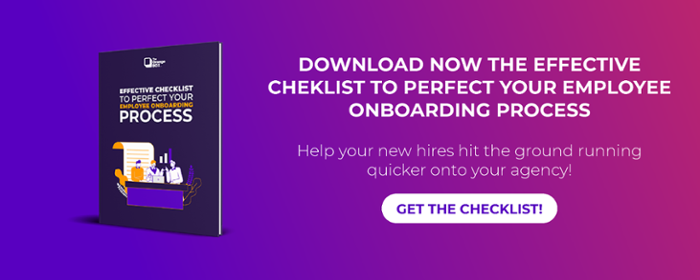Finding and Hiring the Right Fit for your Company

Delia T.
Delia T. | Sep 05, 2019 | 6 MIN READ
Sep 05, 2019 6 MIN READ

Hiring is, undoubtedly, a pretty challenging aspect of running a company. When your team consists of a few people, each hire could make or break your business' future.
Moreover, finding the right employees is anything but easy. Part of the reason is that startups, small and medium firms are often related to financial instability, unpredictable working conditions, and large workloads. Hence, numerous job applicants tend to steer clear from these types of companies and go for the big corporations.
However, startups, small and medium businesses offer amazing growth potential, a real chance to build an entrepreneurial spirit, learn new skills, and work with experts. All of that makes them the ideal job opportunity, for the right fit.
Here's how you can find and hire great employees for your company.
<<Make sure you follow these steps to help your new hires hit the ground running quicker onto your agency>>
Know the position you're hiring for
It's no secret that you should know the qualities a new hire should have for the job position you're hiring. Plus, you need to be familiar to some extent with what the position entails, in order to know if the person is good or not at their job. In short, you have to know what you're looking for.
You might wonder how can you hire a developer without knowing how to code, or a graphic designer without knowing a thing about design. While you might think that this process translates to the bulk of the recruitment workload falling on your shoulders, we're here to help. No, you can't master content marketing or JavaScript within days for the purposes of hiring. Nevertheless, you can educate yourself on what a role usually entails before going into the hiring process.
We've made a list of the key job positions in a company and their brief descriptions.
Social media manager

A social media manager will manage the firm's social media marketing. This includes but is not limited to:
- Planning, strategy and goal setting
- Developing brand awareness
- Social media content management
- Reputation management
The social media manager is a highly creative and motivated person who is experienced and passioned of connecting with current and future customers. This way, he/she will both turn fans into customers and customers into advocates.
Copywriter

The copywriter is a creative individual who provides written words for an advertising campaign. Responsibilities include:
- Creating headlines, slogans, catchphrases, straplines and copy for print
- Writing for web advertising and mobile applications
- Creating scripts for radio jingles and TV commercials
Account manager

The account manager is the individual in charge of managing a business' relationships with its customers. Here are some duties:
- Develops and maintains long-term relationships with accounts
- Makes sure clients receive requested products and services
- Is the point of contact for the assigned customers
- Generates sales among client accounts, including upselling and cross-selling
- Communicates client needs and demands
- Works to carry out client goals while meeting company goals
- Identifies opportunities to grow business with existing clients
- Collaborates with other team members working on the same account to ensure consistent service
SEO Specialist
An SEO specialist is in charge of analyzing, reviewing and implementing websites that are optimized to be picked up by and rank high on search engines. Some main responsibilities:
- Performing ongoing keyword research.
- Optimizing landing pages and content for search engine optimization.
- Researching and implementing relevant content recommendations for organic SEO success.
Content manager

A content manager oversees all content creation activities for the company's website(s). Responsibilities include:
- Collaborating with other teams to devise a web content strategy that aligns with the firm's wider goals.
- Creates a realistic and comprehensive content marketing calendar to ensure regular content on the website throughout the year.
- Targeting keywords set by the SEO specialists and basing articles around them.
- Repurposing content for different mediums.
Data analytics specialist

A data analytics specialist is in charge of importing, aggregating, cleansing, validating, transforming, and analyzing data from various sources in order to make conclusions about industry/niche trends and best practices. Duties include:
- Interpreting data.
- Analyzing results using statistical techniques.
- Developing and implementing data collection systems, data analyses, and other strategies that optimize both statistical efficiency and quality.
- Acquiring data from primary or secondary sources and maintaining databases.
Graphic designer

A graphic designer creates visual communications in order to convey messages in an effective and aesthetically appealing manner. The main responsibilities of a graphic designer include:
- Conceptualizing visuals based on requirements.
- Creating images and layouts by hand or using design software.
- Testing graphics across various media.
Website support specialist
Website support specialists offer web-based support for a broad variety of products, including computer software. Main duties:
- Teach customers how to use a product.
- Implement training sessions for other employees and/or clients.
- Recommend the best program options.
Web developer

A web developer is in charge of the coding, design, and layout of a website according to the firm's specifications. Some of the main responsibilities:
- Writing testable, efficient code by using up-to-date software development practices.
- Creating website layout/user interfaces by using standard HTML/CSS practices.
- Integrating data from diverse back-end services and databases.
Web designer (UI/UX)
A UI/UX web designer produces top-notch design solutions using prototypes, wireframes, storyboards, flow diagrams, site maps, graphic, and visual designs. Also, he/she designs UI tools and elements like search boxes, navigation menus, tabs, and widgets. So, the main duties can be organized like this:
- Collaborating with engineers and product managers to gather and evaluate user requirements, in collaboration with product managers and engineers.
- Illustrating design ideas using sitemaps, process flows, and storyboards.
- Designing graphic user interface elements, such as menus, tabs, and widgets.
Questions to ask in an Interview
There are some key questions to ask in an interview in order to get valuable, helpful information about the candidates. Some examples:
1. Can you tell me a little about yourself?
2. How did you hear about the position?
3. Why do you want this job?
4. What are your expectations for this role during the first 30 days, 60 days, year?
5. What do you like best about working for this company?
6. What are your greatest professional strengths?
7. Tell me about a challenge or conflict you've faced at work, and how you dealt with it.
8. To date, what professional achievement are you most proud of?
9. What are you looking for in a new position?
10. How do you deal with pressure or stressful situations?
11. What's your dream job?
12. What are your salary requirements?
13. Do you have any questions for us?
At the end of the interview don’t forget to answer any question that your new hire have and let them know that you appreciate her or his time.
Although CEOs, founders, HR and project managers have it a bit hard from the start, it's definitely not impossible to find and hire great employees for your business. As long as you actively seek out for the right candidates and know what you’re looking for, you'll find your purple squirrel in no time.
TABLE OF CONTENTS
Stay Updated with Our
Latest Posts
Subscribe now to receive the freshest content, insights, and updates directly in your inbox.



2024 © The Orange Box Agency – All rights reserved




.png?width=90&height=90&name=facebook%20(1).png)
.png?width=94&height=96&name=Vector%20(1).png)